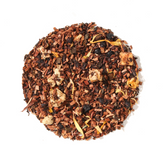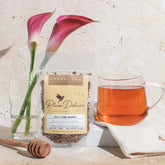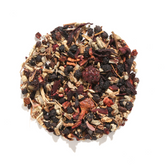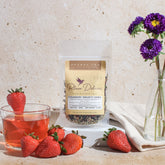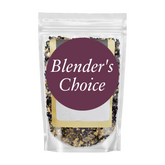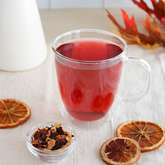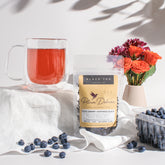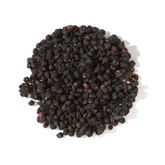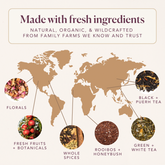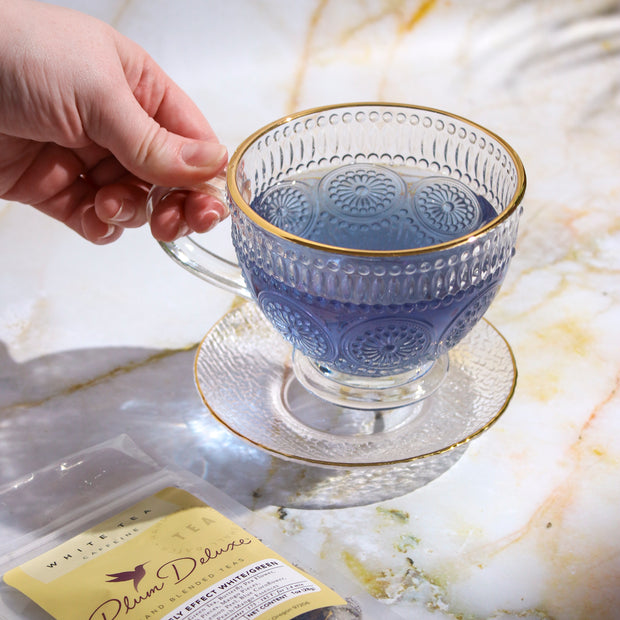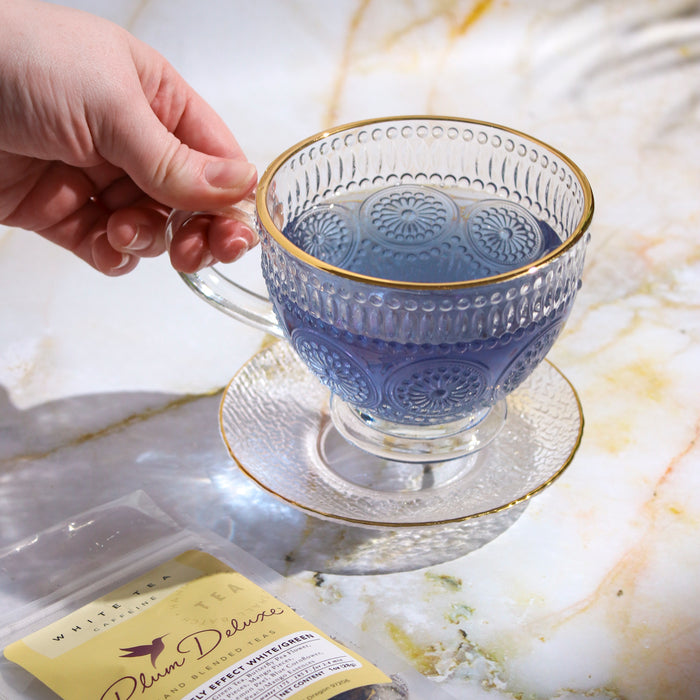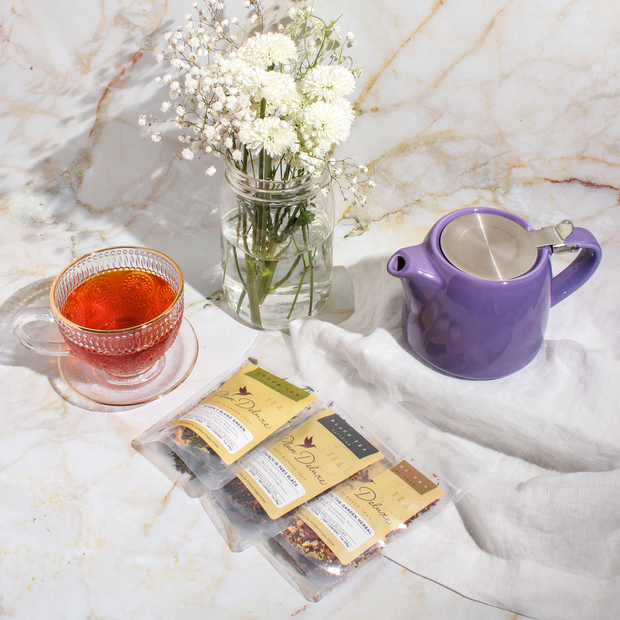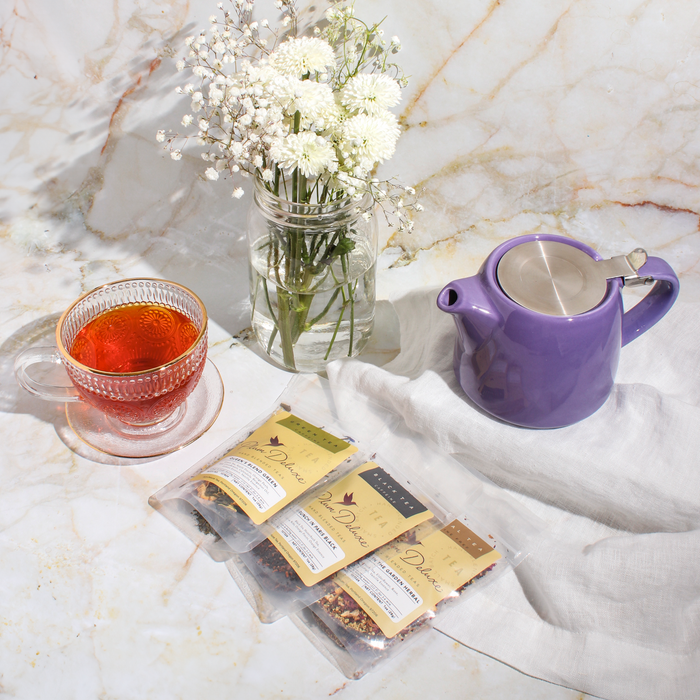Have you ever wondered about the difference between red rooibos vs green rooibos? What if a label just says “rooibos,” with no color specified? Did you even know there are different rooiboses? Did I just make up a word? Time to put on my journalism hat and do some digging.

Let’s Begin at the Beginning: What is Rooibos?
For starters, it’s not pronounced ROO-ee-bose; it’s roy-boss. Two syllables, not three. Now we can at least sound like we know what we’re talking about.
“Rooibos” is an Afrikaans word that means “red bush,” and it refers to a plant endemic to the Cederberg Mountains in the Western Cape of South Africa, Aspalathus linearis. South Africa? Go, Springboks! (That’s South Africa’s national rugby union team, named after the antelope.)
Young branches of the rooibos shrub are reddish, but the needle-like leaves are green, as is the overall appearance of the shrub. Tiny yellow flowers bloom in spring and produce a lance-shaped fruit containing one or two seeds. Aspalathus linearis is an important wild resource and a commercially cultivated crop, both with limited ranges.
In Africa, rooibos tea is sometimes also called “red tea,” bush tea,” “redbush tea,” and “long-life” tea, and it has been used for myriad health and medical benefits for centuries. Studies have been and continue to be done, exploring the effects of rooibos on blood sugar, cardiovascular disease, allergies, aging, and more. Rooibos is naturally caffeine-free, low in tannins, and contains antioxidants. It is used in beauty products as well as tea.

So, What’s the Difference: Red Rooibos vs Green Rooibos
The difference between red rooibos and green rooibos is the same as the difference between black tea and green tea (the Camellia sinensis kind): it’s in the processing. Red rooibos, like black tea, is oxidized (“fermented” in industry-speak) and green rooibos, like green tea, is not.
To make red rooibos, young leaves and stems are harvested, bruised, wetted with water, and allowed to oxidize, creating the red-brown color. At precisely the right moment, leaves are dried to stop the oxidation process and make a shelf-stable (non-rotting) product.
To make green rooibos, leaves and stems are dried immediately after they are harvested, before they have a chance to oxidize. If a blend lists just “rooibos” as an ingredient, it’s red rooibos. When green rooibos is used, it’s labeled as such.
While rooibos has been sought out and used by Indigenous people for hundreds (perhaps thousands) of years, it wasn’t commercially developed until the 1930s. Green rooibos wasn’t widely produced until the 1990s. In 2006, a rooibos espresso made the leap from the tea world to the coffee world, and these days “Red cappuccino” is a popular beverage in South African coffeehouses.

The Taste of Red Rooibos vs Green Rooibos
I first tried rooibos tea in Botswana, the straight-up kind enjoyed by locals, and it did not win me over. Truthfully, I didn’t give it much of a chance, and with my hasty, over-do-it ways, I may have brewed it poorly.
Since then, my impression has changed, due in no small part to Andy’s magic here at Plum Deluxe. I look forward to having rooibos in Botswana again so I can pay better attention and give it an honest go.
From where I sit and sip now, I’d say red rooibos tea has a warm, earthy, slightly nutty, slightly sweet flavor. Some claim it has a hint of vanilla, but I don’t get that. I find a longer steep yields a fuller, more robust flavor.
Green rooibos is lighter, less earthy, but still with a whisper of sweetness. This, too, can be brewed longer than suggested without getting bitter like green Camellia sinensis.
Both red rooibos and green rooibos play nicely with other flavors, making them ideal bases for clever blends, the specialty of Plum Deluxe.

Rooibos Tea at Plum Deluxe
To explore rooibos yourself, use the search feature on Plum Deluxe to filter options. Notice that rooibos isn’t just in herbal teas; some black teas are also blended with it, like Caramel Almond black tea, and Toasted Nut Brulee oolong.
On the herbal side, you’ll find rooibos blended with everything, from the magical blueberry-lavender-rosemary combo in Meadow Walk to the customer-favorite Pears and Cinnamon. Chances are good you’re already drinking rooibos tea.

A Brewing Tip for Rooibos, Red and Green
Those needle-like leaves of Aspalathus linearis yield a superfine end product that can escape infusers with larger holes. A fine stainless steel mesh infuser will keep those tiny bits out of your brew.
Mind you, there’s nothing wrong with having some rooibos floaties in your tea. Unlike the leopards that roam the Cederberg Mountains where wild rooibos grows, they won’t bite.

![Summer Iced Tea Variety Pack [6-Pack Variety of Flavors]](http://www.plumdeluxe.com/cdn/shop/files/summervarietypack.png?v=1713833466&width=165)


